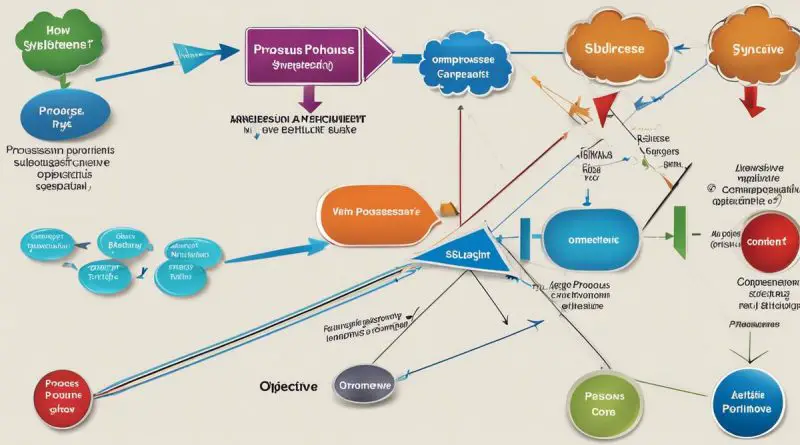Exploring Pronouns as Complements
In the realm of linguistics, the nuanced role of pronouns as complements casts a wide net over the intricacies of syntactic and semantic interpretation. This essay embarks on a meticulous journey through the core concepts and utilitarian facets of pronoun usage within the English language, anchoring its exploration in the foundational understanding of various pronoun types and their syntactical deployment as complements. The fabric of our discourse is woven with threads of complexity that range from the elementary mechanics of subjective, objective, possessive, reflexive, and relative pronoun forms to the subtleties of their function as subject and object complements. This scholarly endeavour seeks to demystify the essential lingual constructs that form the bedrock of effective communication and grammatical precision.
Fundamental Understanding of Pronouns and Complements
Linguistic Underpinnings of Pronouns and Complements: An Exploration through the Mechanisms of Syntax and Semantics
Abstract: In the study of linguistics, the categories of pronouns and complements constitute fundamental components of syntactic structure and semantic interpretation. This article delineates the intricate relationship and pivotal roles that these grammatical elements play in the economy of language. The discourse delves into the complexities of pronoun categorisation, their referential properties and the interface with complement structures, shedding light on the sophisticated architecture of linguistic cognition.
The Pronominal Domain: Explicit References and Implicit Anchors
Pronouns serve as proxies for nouns, and their categorisation is multifold, encompassing personal, possessive, reflexive, reciprocal, demonstrative, indefinite, and relative pronouns, among others. Each type adheres to stringent morpho-syntactic and semantic constraints, yet operates with remarkable fluidity within a sentence’s architecture.
Personal pronouns, simple as they may seem, carry significant functional weight. They must align in features such as person, number, gender (where it exists) and case. These features are not random assortments of linguistic atoms; rather, they are informed by deeply-rooted cognitive strategies for processing and producing economical, salient discourse. Thematically, pronouns may function as placeholders, reducing redundancy and preventing unnecessary repetition.
In examining reflexive and reciprocal pronouns, one uncovers an intricate interplay between syntax and the theory of binding, which constrains the pairs of elements within a sentence that can be co-referential. The typological variation in pronoun systems across languages offers tantalising clues about the universal principles underpinning language and the parametric space in which individual languages operate.
Complements: Completing Thoughts and Scaffolding Meaning
Turning to complements, they are identified either as clauses or phrases that fulfil the syntactic requirement of a predicate, thereby completing the propositional thought expressed by a sentence. This syntactic function has far-reaching implications for the semantic structure and the textured layers of meaning in language.
Complements can be further divided into types: objects of verbs (direct and indirect), subjects of predicative complements, and various adjunctive forms such as adjectival, adverbial, and nominal complements. The selection of a complement is dictated by the predicate’s valency, which reflects the predicate’s potential to necessitate a certain number and type of arguments – a characteristic feature interlinked with the deep semantic properties of verbs and predicates more generally.
Nominal complements render subtleties in the nominals that host them, a concept perceived in the interstitial zone between syntax and semantics, morphologically marked or unmarked depending on the linguistic context. Adjectival and adverbial complements, even more perplexing perhaps, modulate the gradable properties of their hosts, embedding within their structures degrees of comparison and scales of evaluation.
An Inflection Point: When Pronouns and Complements Converge
The juncture between pronouns and complements reveals a particularly salient aspect of linguistic cognition. Complement clauses can often contain pronouns which themselves necessitate antecedents for proper interpretation. The orchestration of this relationship is subtle, evidencing the ways in which comprehension transcends mere sentence boundaries, instead demanding an understanding anchored in discourse context and the knowledge of the interlocutors.
Conclusion
The elucidation of the linguistic underpinnings of pronouns and complements exposes the rich tapestry of human language, a construct both facilitated and constrained by our cognitive endowments. The journey through their syntax and semantics is revelatory, not only of language itself but also of the human capacity to convey complex ideas and emotions with nuance and preciseness. These foundations are not esoteric observances; they are beacons of the human intellect, shared universally yet expressed singularly in the plethora of world languages. The profundity of their study is matched only by the breadth of their application, reflecting the quintessential human endeavour to understand and be understood.

Syntactic Structures Featuring Pronouns as Complements
The Syntactic Integration of Pronouns as Complements: A Linguistic Inquiry
Pronouns, those versatile elements of language capable of standing in for explicit nouns, are fundamental to the coherence and fluidity of speech and writing. Their incorporation into syntactic structures as complements is a subtle yet intricate dance, which contributes greatly to the dynamism and adaptability of language.
Understanding how pronouns operate within syntactic structures necessitates an appreciation of their flexibility and the syntactic positions they can occupy. Pronouns, as substitutes for noun phrases, are adept at assuming the role of complements in various syntactic constructions. Their ability to do so is predicated not merely on their inherent function but also on structural requirements and relationship with verbs and prepositions within clauses.
Consider, for example, the integration of personal pronouns in direct object positions. Here, they complete the action of the verb, ‘She called him,’ with ‘him‘ being indispensable in denoting the action’s recipient. This syntactic arrangement is pivotal in rendering the proposition complete and understandable.
When contemplating the role of pronouns within indirect object constructions, one elucidates their versatility further. The pronoun in ‘She gave him the book‘ appears not merely as a direct recipient but as an essential component leading to a layered and nuanced syntactic structure, delivering additional information regarding the action’s beneficiary.
Furthermore, in the realm of prepositional complements, pronouns exhibit a high degree of integration. The sentence ‘She stood beside him‘ demonstrates the prepositional phrase’s reliance on the pronoun ‘him‘ to fulfill its relational role, anchoring the subject spatially to another entity.
Beyond serving as objects, pronouns also function adeptly within subject complements, intertwined within copular constructions. In instances such as ‘The victor was she,’ the predicative pronoun ‘she‘ is necessitated to ascribe a property or identity to the subject, forging a syntactic link of equivalence or attribution.
In the complex domain of complement clauses, the syntactic interplay arises not only from the standalone flexibility of pronouns but also from their interaction with subordinating conjunctions. Pronouns within complement clauses, as seen in ‘She said that he would go,’ are pivotal in maintaining clause cohesion and inter-clausal relationships, ensuring a clear conveyance of embedded propositions.
Delving into sine qua non scenarios, one identifies pronouns as complements in imperative sentences. The necessity of pronoun complements for clarity and directive force can be underscored in a command such as ‘Give it to her.’ Absent ‘it‘ and ‘her,’ the imperative loses its specificity and communicative potency.
In sum, the syntactic role of pronouns as complements is a testament to their linguistic valence and versatility. Through their integration in various substructures, from direct and indirect objects to subject complements and beyond, pronouns crystallize propositions and facilitate nuanced inter-human communication. Their presence within the syntactic architecture is vital – not simply filling a positional necessity, but acting as pivotal cogs within the intricate machinery of language, enabling meaning to be deftly shaped and relayed within and across the limitless expanse of human expression.

Semantic Implications of Pronoun Complementation
Emerging from a detailed exposition on pronouns and their multifarious uses within the linguistic landscape, it becomes pertinent to discuss the semantic ramifications when pronouns are employed as complements. This aspect of linguistic inquiry amalgamates syntactical structure with semantic richness, further elucidating the integral role pronouns play within the tapestry of language.
The utilisation of personal pronouns as complements in copular constructions, such as “It is she” or “The winner is he”, foregrounds issues of formality and prescriptivism in linguistic praxis. Residing in the tension between prescriptive grammatical structures and descriptive linguistic realities, these pronoun complements attest to the inextricable link between language evolution and the social mores interfacing with linguistic communication.
In the demesne of semantics, employing pronouns as complements can engender a level of ambiguity with regard to antecedent-reference integrity. The resolution of pronominal reference frequently hinges upon discourse-related factors, thus bringing the consideration of semantic roles prominently into the foreground. The semantic role of an agent, for example, reframed by a pronoun as a complement, requires careful co-textual or contextual support to preserve clarity and prevent obfuscation.
Moreover, the deployment of pronouns in existential constructions also bears semantic weight. For instance, “There is one who knows” serves as a testament to the subsuming of the pronominal element within a broader existential framework. Such structures invite a reevaluation of existential predications and their affinity towards pronominalisation, which in turn bridges into discussions of the philosophy of language and identity instantiation.
In predicate adjective complements, pronouns coalesce with adjectives to offer expressions of subjective evaluations or states of being, as witnessed in sentences like “They made her angry”. In these scenarios, the pronoun seamlessly integrates into a structure that predicates an emotional or qualitative state upon the subject, thus underscoring the dynamic between subjectivity and grammaticality.
Considering the communicative economy of language, pronoun complements contribute to the streamlining and efficiency of linguistic interchange, eschewing redundant repetition where the referent is already known or inferrable. This economisation, however, is not devoid of semantic considerations; it encapsulates an understanding that the speaker believes the referent to be within the listener’s cognitive grasp.
The use of pronouns as complements in non-finite clauses similarly invokes semantic discussions, particularly regarding the interpretation of implied subjects within the infinitival constructions. The interpretation of “He wants to be him” necessitates an intricate semantic process by which listeners or readers discern the subjects of the wanting and the being, respectively.
The analysis of pronominal complements in passive constructions, as in “She was considered her”, further illustrates the semantic intricacies at hand; it conveys a relationship which is simultaneously an act of consideration and an assertion of identity, encapsulating the semantic depth borne by pronouns within such contexts.
The semantic weight of pronouns when employed as complements in verbal constructions cannot be overstated. They function as crucial constituents that enhance the conveyance of meaning within and across sentences, and their study remains an inexhaustible wellspring of linguistic insight. It is in the delicate discernment of these semantic subtleties that the full amplitude of pronouns’ role as complements can be genuinely appreciated, with profound implications for the realms of syntax, semantics, pragmatics, and the intricate interplay which defines human language and cognition.

Photo by christianlue on Unsplash
Pragmatics and Contextual Usage of Pronouns as Complements

Error Analysis and Pedagogical Approaches in Pronoun Complementation
Common Errors in the Use of Pronoun Complements and Effective Pedagogical Strategies
Despite the prodigious body of research on pronouns and their complements, students of linguistics frequently encounter pitfalls in the practical application of these concepts. Misattribution of pronoun complements can lead to errors in both understanding and constructing language. This analysis shall endeavour to illuminate several prevalent mistakes and propose efficacious didactic approaches to ameliorate proficiency in the use of pronoun complements.
Firstly, non-native speakers often grapple with the selection of the appropriate case for pronoun complements, especially in languages with a strict nominative-accusative demarcation. A common error is the misuse of objective case pronouns where nominative case pronouns should be employed, and vice versa. For instance, the errant employment of “me” instead of “I” in copular sentences (e.g. “It was me” as opposed to the prescriptively correct “It was I”).
Secondly, the confusion between reflexive and non-reflexive pronouns can be observed in learners’ syntax. The erroneous replacement of reflexive pronouns with personal pronouns in instances requiring emphatic or reflexive expressions undermines the integrity of the message conveyed. Errors such as “She gave myself a break” instead of “She gave herself a break” exemplify this.
Effective pedagogical strategies to counter such difficulties emphasise an immersive and intuitive approach to language learning, surpassing purely theoretical instruction. One such method involves employing contrastive analysis to highlight divergences in case usage between the students’ native languages and the target language. By drawing attention to the rules governing case assignment in different languages, learners can develop a more robust understanding of when to employ certain pronoun complements.
Another fruitful approach is the inclusion of corpus-based learning. Through the analysis of language corpora, students can observe authentic usage patterns of pronoun complements in real-life contexts. By studying copious instances of correct usage within a structured framework, learners can internalise the patterns and diminish the likelihood of committing syntactical misdemeanors.
Furthermore, structured output activities, which force the learner to produce language that conforms to specific grammatical conditions, can enhance mastery over pronoun complements. These activities could include sentence rephrasing exercises that require the manipulation of pronouns while maintaining the semantic value of the sentence.
Finally, deliberate practice using transformation drills can solidify the comprehension of pronoun complements. These drills might encompass the transformation of sentences from passive to active voice, ensuring that the learner understands the role of pronoun complements within different syntactical structures.
In summation, it is paramount for linguistic educators to tailor teaching methodologies to the specific pitfalls students face with pronoun complements. By employing contrastive analysis, utilising language corpora, engaging in structured output activities, and practising transformation drills, learners can overcome common errors and enhance their linguistic competence.

Photo by aluengo91 on Unsplash
Through the kaleidoscope of linguistic analysis and pedagogical reflection presented herein, we have ventured far beyond the mere mechanics of pronoun usage in the English language to touch upon the finer points of semantic resonance and pragmatic fluidity. It is our collective quest for precision and clarity in communication that drives the continuous examination and understanding of syntax, and the role played by pronouns as complements is quite pivotal in this regard. As the language continues to evolve, so too must our approaches to teaching and learning the subtleties of its usage. The tapestry of language is a living entity, enriched by the diligent efforts of learners and educators alike, striving in unison to master the elusive art of linguistics.
Writio: AI content writer for websites and blogs. This article was written by Writio.
